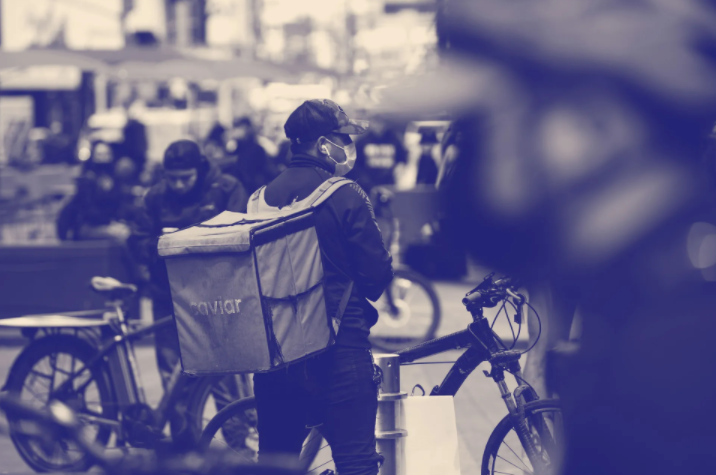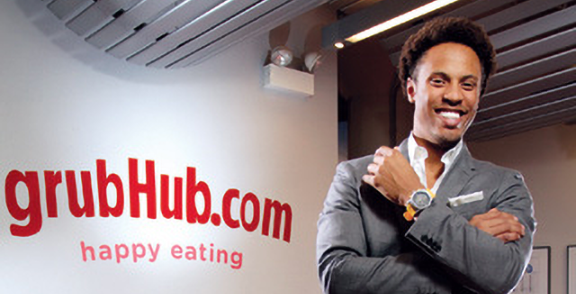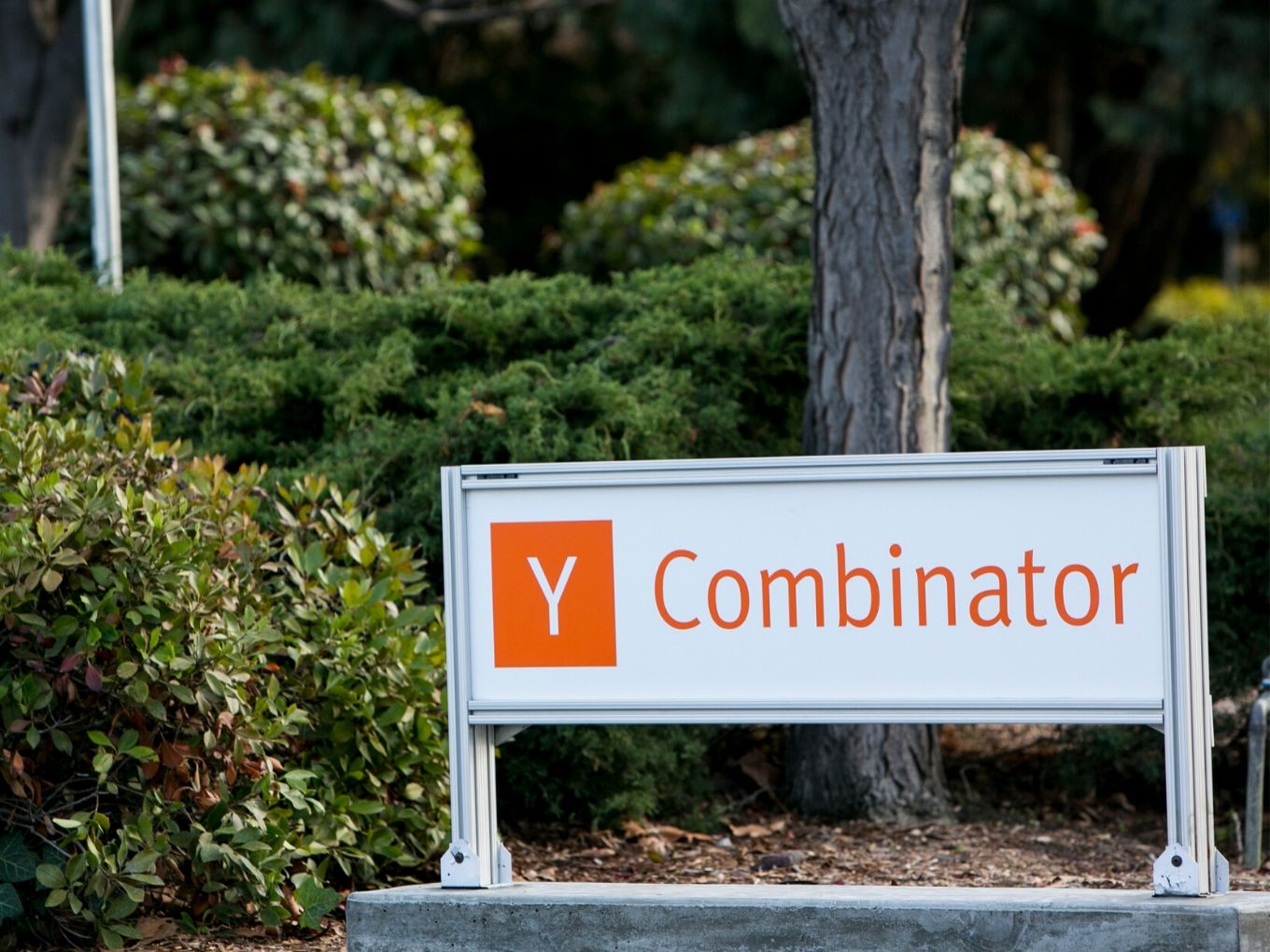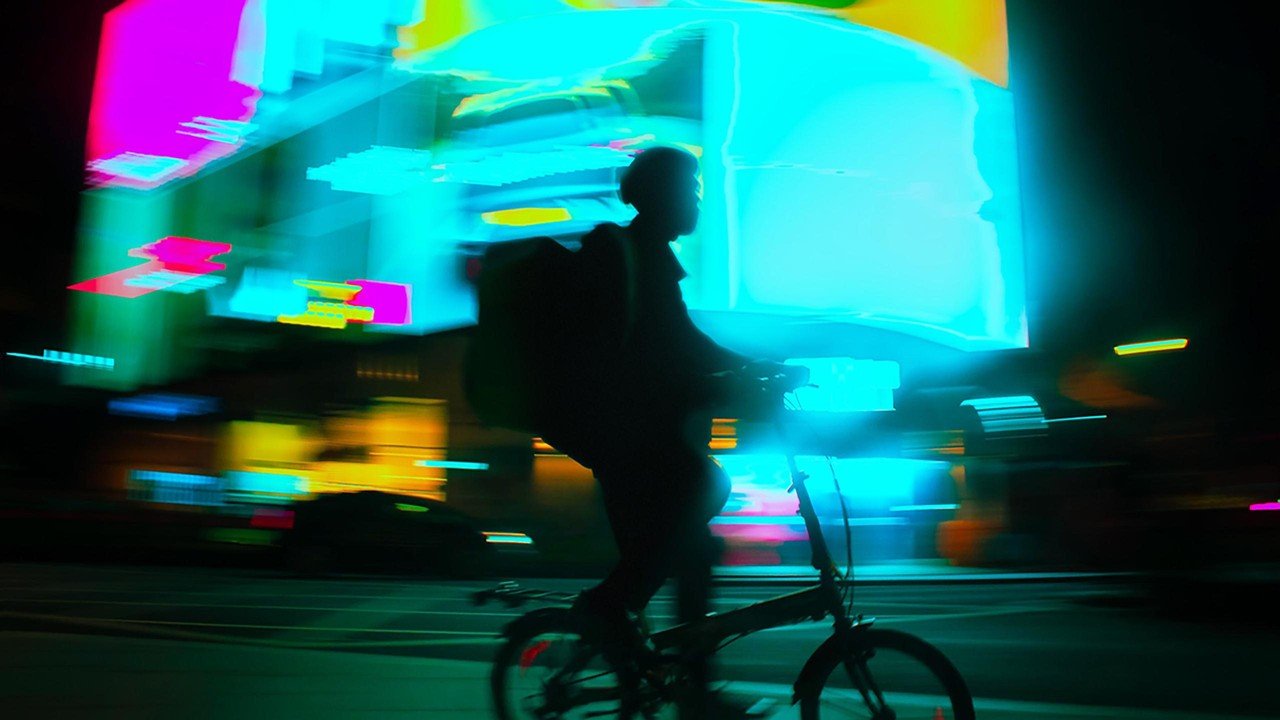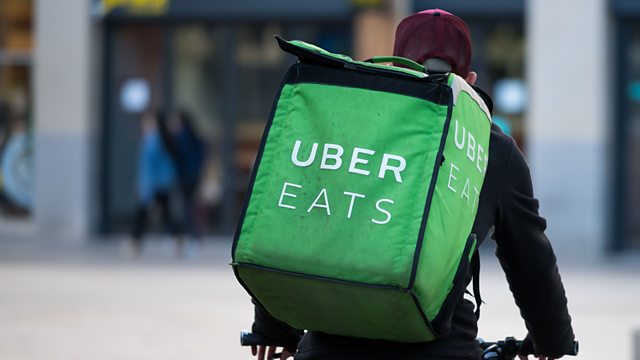Prior to the coronavirus pandemic, the business model of food-delivery apps went largely unconsidered by the diners who relied on them for midday kale salads and late-night taco feasts. Platforms such as Uber Eats, DoorDash, and Grubhub often charged restaurants commissions of up to thirty per cent per order, and they were evasive about how (and how much) their couriers were compensated. But for most restaurants delivery comprised only a fraction of total sales. Then the
In April of last year, San Francisco became the first city to enact an emergency order to cap delivery-app fees for restaurants at fifteen per cent. That prompted a cascade of similar legislation in other cities and states, almost all of them
Moe Tkacik, a former journalist who now works on delivery-app regulation, thinks that the apps may be fighting a losing battle. A senior fellow at the antitrust think tank the American Economic Liberties Project and the founder of the A.E.L.P.-funded Protect Our Restaurants, Tkacik has been studying the impact of delivery apps since early in the pandemic, when her husband, a chef, was struggling to keep his restaurant afloat. I spoke with her recently about why regulation has been so long in coming, who ought to pay for the luxury of convenience, and whether a better food-delivery model is possible. Our conversation has been edited for length and clarity.
What put delivery apps on your radar?
In March of last year, I was working with the American Economic Liberties Project and, meanwhile, trying to do whatever I could to help my husband, who’s the chef at an Italian restaurant in D.C. I was concerned that a lot of his workers would not qualify for unemployment, so we were putting our heads together to figure out how we were going to change his business model to be something capable of generating revenue during the pandemic. Delivery was one of the first things we thought of, and his general manager at the time said, “Well, you know, the minimum [commission] is going to be thirty per cent for all of the delivery apps.” The idea that they would be extracting thirty per cent from every transaction was just unthinkable to me. And I knew immediately: oh, that’s not cool. It’s unsustainable for anybody, and it’s going to kill restaurants. They couldn’t have arrived at that number in a good-faith way. And indeed, as I began to probe the history of the delivery-app sector, the thirty-per-cent commission really only shows up when Uber Eats entered the market. And when they enter a market, suddenly DoorDash and Grubhub are raising their commissions, too. We actually have e-mails that certain restaurants have gotten that say, “As you are aware, the market rate for online/mobile delivery ordering is now thirty per cent,” and accordance with that, we will be raising your fees.
That’s not how competition is supposed to work, right? We’re taught that if there’s more competition, it drives costs down and quality up. And what you’re describing sounds like the opposite.
In the world of Silicon Valley finance, you have people who all know one another, you have [companies with] similar investors. Take DoorDash and Uber Eats: in early 2020, SoftBank—which is a major investor in both of them—was trying to arrange a merger of those two companies. In a lot of cases, you don’t actually have any legitimate competition, because you’re creating de-facto collusion. When there are so few competitors in a market, it’s pretty easy to kind of just wink and nod.
You see that with wages, too. People who’ve been driving delivery for a long time will always tell you about those early days with Postmates, and how much money they made—it was like thirty dollars an hour. But by 2018, 2019, everyone who was driving for these apps was starting to wonder if they could sustain it. What a lot of drivers have told us is that, at that point, there were a lot of incentives [for them] to commit to regular schedules, to show up at regular times, to the point that they would quit whatever their day job was. And then that money goes away.
It feels like there’s the question of whether these delivery companies are being predatory toward restaurants and how to regulate that, and then there’s the matter of the delivery workers, and their safety and their quality of life. Are the two actually separate, or are they the same issue?
They’re the same issue. I don’t know if you saw, but there was this viral post on a newsletter called Margins, where this guy was talking about his friend who owns a few pizza restaurants, and they screwed DoorDash with this complicated scheme.
I remember that—DoorDash posted the restaurant’s menu online without permission, and the restaurant owner noticed their prices were lower than his actual menu. So he just ordered his own pizza back to himself, dozens of times, and took DoorDash’s money.
In the comments section on that post, I saw a post from a gentleman named Collin Wallace, who was really hyped up. He says—I’m reading it now:
It goes on. Collin had this startup that he founded in college, and Grubhub bought him out in 2011, 2012. He ended up going to Stanford for business school, and he was a year behind [the DoorDash C.E.O.] Tony Xu’s class. He told me, “I told Tony, ‘Why would you want to get into [the delivery business]? Grubhub has this pretty locked down.’ What I didn’t understand was the impact of zero interest rates.” Basically, there’s all this money sloshing around, and these venture-capital funds need somewhere to put it. They’re in the business of trying to make monopolies, and they will throw a lot of money at that. And in an environment of minimal, completely defunded, completely defanged, completely ineffectual antitrust enforcement—the Obama F.T.C. was unbelievably ineffectual, and it’s not the first F.T.C. that has been—they understood that there were all kinds of potential opportunities if they could just monopolize that customer base.
My understanding is that the promise of these money-losing, venture-funded companies is that they will eventually become profitable, once they capture a sufficient share of the market. And right now the delivery companies dominate the market, but they still can’t seem to get close to profitability.
Right. They don’t know how to get out of that business model that they invented, how to climb out of that hole, without potentially yielding market share. One of our Protect Our Restaurants members owns a restaurant in Iowa City, and they started a co-op with seventeen other restaurants—it’s a delivery service that operates just on a local basis. He’s set up little franchises of his model in other cities. It’s not easy to get off the ground, but it makes a lot more sense, because [the DoorDash model] is just not run for the benefit of the restaurant, or even with the restaurant’s operations in mind. There are a lot of ways that the whole thing could be improved if these were just locally run businesses—a restaurant coalition, or a city department of tourism, or something like that operating the marketplace. Those are groups that have the interests of the local dining community, and the community at large, in mind. The whole operation [of massive, decentralized delivery apps]—it doesn’t need to exist.
There doesn’t need to be someone a thousand miles away pushing a button that makes a guy go pick up food from a restaurant three blocks away from me and then bring it to my apartment.
They’re middlemen, and they make it impossible—like, if you don’t have something, if you run out of something, what are you going to do? You can’t call the customer. One of our members was telling me that, one day, he opened up a customer account on his work cell phone, and he realized that Uber Eats was telling his customers that they were still waiting for the kitchen to finish preparing their food. He said that these were orders that had been done for, like, fifty minutes. He was getting all these angry calls. People were, like, “Why is it taking you so long to make my food?” And he’s, like, “Dude, just come in!” If people knew, they would just go get it themselves. I mean, we have a labor shortage, and ninety-one per cent of Americans have access to a car. So it’s not a great business model. It’s going to be very price-sensitive.
Which aspect is price-sensitive?
If DoorDash is charging people five extra dollars for a meal, or ten extra dollars, and you start factoring in inflated prices, and the litany of fees—I think that people will make this calculation and decide “It’s not worth it. I’ll just go pick it up myself.” That’s better for restaurants.
That seems dependent on transferring the cost to diners. Which has happened—when cities put caps on what the delivery apps can charge restaurants, the apps charge a fee directly to customers. In Portland, Oregon, for example, DoorDash charged diners a two-dollar “Portland City Mandate” fee.
Which is great. I love that solution to this problem.
I can’t tell if you’re being sarcastic.
No, I really love it, because it forces the diner to actually make that calculation, and that’s how it should be. It’s the customer who is receiving the service. The only service that a restaurant gets from these apps is potential marketing, or a potential customer lead. DoorDash claims that these commission caps are price controls, but they’re not controls on the price that they’re allowed to charge the customers, just on the percentage of commission that they’re allowed to extract from restaurants. If this is a service, if it costs something to provide, then customers should be forced to run that calculus. There’s no benefit that anybody derives from that service being subsidized by Silicon Valley and by restaurants who are being held at gunpoint because they have no other options. If we didn’t have a fee cap here in D.C., I would have felt like it was unconscionable to order from DoorDash. But, with the fee cap, it’s, like, OK, if I’m feeling really lazy, or I have a whole lot to do, I can see if it makes sense to go on DoorDash.
They
One of the notable things about the New York bill is that, more than we’ve seen with other cities’ regulation attempts, it focusses not just on restaurant fees but on delivery couriers’ labor rights — they can set their distance limits, restaurants have to allow them to use their bathrooms.
It’s so great, and it is so horrifying. I’ve heard of times that drivers would come into restaurants, and [the restaurant management] would chase them away, like they were menaces. Our group was very aggressively anti-Prop. 22 [the 2020 California ballot initiative that exempted delivery and car-service apps from classifying gig workers as employees]. We were always cognizant that the restaurants and the drivers were in the same boat: the delivery apps were going to try to present themselves as being pro-worker when it came to dealing with the restaurants, and trying to portray the [fee caps] as being an anti-delivery driver measure.
One of the reasons [New York’s] legislation has been specific and strong is that Andrew Rigie [the executive director of the New York City Hospitality Alliance, a restaurant-industry coalition] has been working closely with Los Deliveristas Unidos and other delivery-driver-rights groups. And New York has been focussed on this issue for a really long time, and has a grasp of its nuances.
DoorDash, Grubhub, and Uber Eats jointly filed suit against New York City a few weeks ago, to contest the fee caps. In California, they had their extremely well-funded Prop. 22 campaign, though another judge has now claimed that’s unconstitutional. Is it going to be endless pull and push forever?
I think that many cities will be closely watching what happens with the New York law. I was shockingly unimpressed by the apps’ lawsuit against New York—their premise is that New York is violating their constitutional right to equal protection under the law, and treating restaurants as a favored industry. It’s outrageous for them to claim to be discriminated against. There’s probably a good legal case to be made that they
